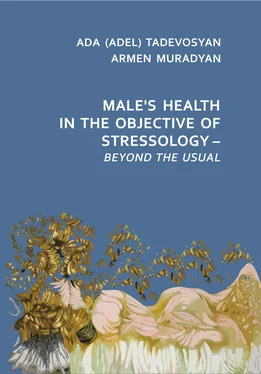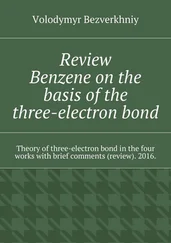Paul Bach-y-Rita was an American neuroscientist in the middle of the last century, whose most notable work was in the field of neuroplasticity. Bach-y-Rita was one of the first to seriously study the idea of neuroplasticity (although it was first proposed in the late 19th century), and to introduce sensory substitution as a tool to treat patients suffering from neurological disorders.
Paul Bach-y-Rita was one of the first who has discovered that our sensory systems have a plastic nature, and that in case of damage of any of them, the other from time to time can take over its functions. Paul Bach-y-Rita called this process “ sensory substitution ” and developed methods for bringing it into operation, as well as devices that give us “extrasensory perception”. Having discovered the possibility of the nervous system adaptation to the vision via chamber of eye, not the retina, Bach-y-Rita gave blind people the greatest hope for the emergence of retinal implants that can be introduced into the eye surgically. This is the ability to adapt and suggests that the brain is plastic, i.e. is able to reorganize its sensory-perceptual system. In 1977 by means of a new technique it was proven that (contrary to the Brock’s statement that a person speaks with the help of the left hemisphere) 95 % of healthy right-handed persons processed the language information in the left hemisphere, while the remaining 5 % – in the right one. 70 % of lefties process this information in the left hemisphere, but 15 % do so with the help of the right hemisphere, and another 15 % use for this both hemispheres (S. P. Springer and G. Deutsch, 1999).
Barbara and Joshua Cohen in 1980 opened the Arrowsmith school in Toronto. Then, very few have taken the idea of neuroplasticity and believed that the brain can be trained as muscles, giving it loads, so the work of Barbara rarely found understanding. She developed various training exercises for different patients. There are exercises for people with disorders of the frontal lobes of the brain. These people differ from others in impulsion, or have difficulty with planning, developing strategies, determining priorities, setting goals and their achievements. They are often considered disorganized, frivolous and incapable of learning from their mistakes; whereas Barbara believes that many of the “flighty” or “unsociable” people have problems with the weakening of certain brain functions. Exercises for the brain transform people’s lives.
Among experts in neuroplasticity with a serious track record in the world of the natural sciences, Mertsenih, to whom belong the boldest statements in this area, is well-known. He believes that in treatment of serious illnesses such as schizophrenia, brain exercises can be as effective as drugs; that the brain plasticity exists since the birth of the person until his death; and that a radical improvement in cognitive [3] Cognitive means informative, mental, intellectual (from Lat. cogito – think, cognize). – Editor’s note.
functioning – how we learn, think, perceive and remember – is possible even in old age.
“The brain does not just learn; it always “learns to learn”. In the view of Merzenich, our brain is not a soulless vessel that we fill; it is more like a living being, able to grow and change due to proper nutrition and training. Before him, the brain was regarded as a complex mechanism that has severe limitations in terms of memory, speed of information processing and intelligence. Merzenich proved the fallacy of these ideas. He came to the idea that, perhaps, plasticity is the main property of the brain, which has evolved in the course of evolution to give people a competitive advantage, and that this can be a real “miracle”. His most recent patents were granted to promising techniques enabling to develop language skills without tedious memorization. Merzenich argues that under the right conditions, practicing a new skill can change hundreds of millions, perhaps billions of connections between nerve cells in our brain maps. If you simply perform those dances that learned many years ago, it does not help you to keep the motor cortex in due form. So that your brain can continue to live, you have to learn something really new requiring high concentration. In fact, to introduce human (not an animal) into the study, does not require artificial rewards and punishments. Motivation for learning creates a natural for a person interest to a new, interest in life in general. If such interest does not disappear in adulthood, it serves as a “reward” for full-fledged work of the brain.
In the last decades experimenters actively worked in the same direction. During this time, the laboratories of Rosenzweig and other scientists obtained a lot of data showing that stimulation of the brain causes it to grow virtually by all possible ways. They came to the conclusion that mental training or life in stimulating conditions increases the total volume of the animal cerebral cortex by 5 % and by 9 % – the volume of those regions that are immediately stimulated by training. Trained or stimulated neurons form 25 % more neural branches increasing also the number of connections per neuron and blood supply of the brain.
The results of pathoanatomical studies in humans indicate that training increases the number of neural connections, thereby neurons expand, causing an increase in the brain volume and density.
The method of monitoring brain mapping helped John Kaase and co-workers to overcome the prejudice of specialists against existence of brain plasticity in adults previously disseminated among researchers involved in visual perception. He charted the visual cortex of an adult and then blocked the access to the information incoming from the eye retina. With the re-mapping he managed to demonstrate that only in a few weeks new receptive fields emerged on the map of the damaged area of the cortex. One of the reviewers of the Science rejected the article describing the Kaas study, considering his results impossible. In the end it was published (J. H. Kaas, L. A. Krubitzer, Y. M. Chino, A. L. Langston, E. H. Polley, and N. Blair. 1990. Reorganization of retinotopic cortical maps in adult mammals after lesions of the retina. Science, 248 (4952): 229–31. Merzenich assembled the scientific evidence for plasticity in D. V. Buonomano and M. M. Merzenich. 1998. Cortical plasticity: From synapses to maps. Annual Review of Neuroscience, 21: 149–86.
From the structure the researchers came to the search for chemical compounds (neurochemical system of the brain) that cause and provide work of adaptation mechanisms. The research of Rita Levi-Montalchini (1909–2012), Italian neuroscientist and the 1986 Nobel Prize winner in Physiology and Medicine, led to the discovery of a number of nerve growth factors, one of which attracted attention of Mertsenih. It was a brain-derived neurotrophic factor, or BDNF- magic elixir of the brain. BDNF plays an important role in underpinning the changes occurring in the brain during a critical period. According to Mertsenih, it occurs in four different ways.
When we perform an action that requires the simultaneous activation of certain neurons, they secrete BDNF. This growth factor reinforces the connection between the neurons and helps to connect them together to ensure their co-activation in the future. BDNF also promotes the growth of a thin shell of fat around each neuron, which speeds up the transmission of electrical signals. During the sensitive (critical) period BDNF activates the basal nucleus – the part of our brain that allows us to focus attention and keeps it in the activated state throughout the critical period . N. Doydzh describes this process as follows. The basal nucleus helps us not only to focus attention, but also remember what we are experiencing, helps differentiation of the brain map. Here’s how Merzenich says about it: “It is like in our brain there is a teacher who says: “That is really important – you must know this to pass the exam called life”. Merzenich calls the basal nucleus and the attention system “modulating system of control of plasticity” – a neurochemical system that when activated, transfers the brain to the state of ultimate plasticity.
Читать дальше












